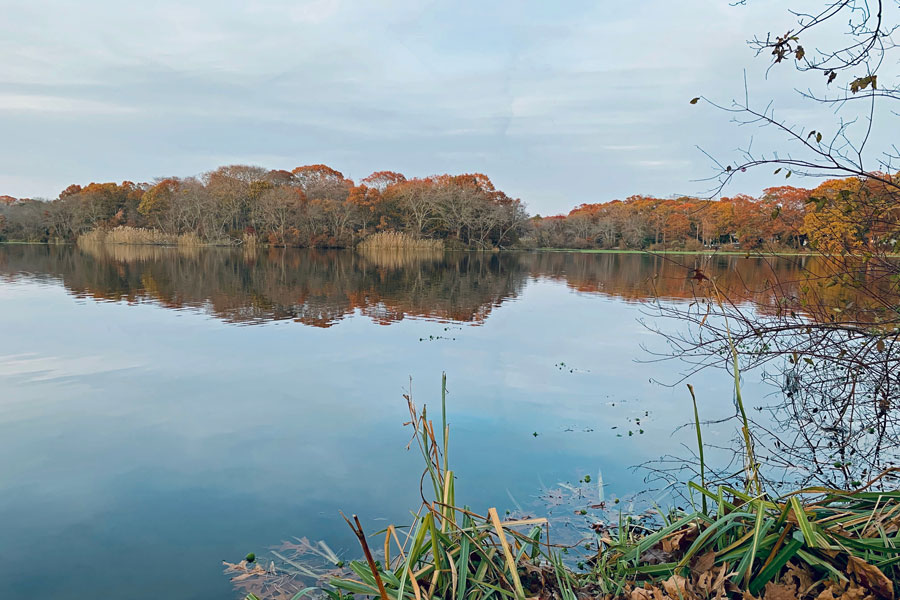The Massapequa Preserve

The Massapequa Preserve (officially the Peter J. Schmitt Massapequa Preserve) is a verdant sanctuary tucked into suburban Long Island in Nassau County. Spanning approximately 432 acres, it is the largest passive-use park in the county and an oasis of woods, wetlands, ponds, and trails surrounded by suburban neighborhoods
History & Origins
The land that now comprises the preserve was once part of a system related to New York City’s water supply. In 1981, Nassau County formally acquired the property and began managing it as public open space. Since then it has remained largely undeveloped, with the goal of preserving native ecosystems and offering low-impact recreation to residents.
Local volunteers and environmental groups have played an active role in maintaining and restoring trails, controlling invasive species, and promoting the preserve’s long-term health and accessibility.
Landscape, Ecology & Wildlife
The preserve contains a mosaic of habitats: upland forest, wetland swales, freshwater ponds, riparian corridors, and marshy edges. These interlaced ecosystems foster a rich diversity of plant and animal life.
Aquatic & Fish Life
One of the preserve’s most popular features is the Massapequa Reservoir, roughly 20 acres in size, located at the southern end of the preserve. It is well-known among Long Island anglers, and during spring and fall it is stocked with trout, making it a highly fished pond. In addition to trout, the reservoir supports populations of largemouth bass, bluegill, pumpkinseed, black crappie, bullhead, carp, American eel, and other species. The shorelines are accessible to anglers (though boating is prohibited).
Historical records show that even in the late 1800s, the reservoir area attracted people by train from across New York just to fish the waters.
Terrestrial Life & Flora
The upland forests host typical Long Island deciduous species, along with understory shrubs, ferns, and groundcover. In the wetter zones, you may find marsh plants, sedges, and wetland species adapted to seasonally saturated soils.
Wildlife is abundant: you may spot squirrels, rabbits, raccoons, various snake species, and a healthy population of birds. Birdwatchers might see robins, cardinals, blue jays, waterfowl (ducks, perhaps swans), and in the skies, hawks or other raptors. The intermingling of open water, forest edges, and wetlands offers prime habitat for amphibians, insects, and other smaller creatures as well.
Recreational Use & Trails
One of the preserve’s key draws is its network of walking, hiking, and biking trails.
- The Bethpage Bikeway, approximately 14.9 miles long, runs along the eastern edge of the preserve. It connects the preserve northward toward Bethpage State Park and beyond, leveraging portions of the Long Island Greenbelt and existing nonmotorized corridors.
- Pedestrian paths and forest trails weave through the interior and western sides, inviting visitors to explore more quietly, off the beaten path.
- Bridges span small streams between ponds, aiding both the continuity of the trail system and offering scenic viewpoints.
Because the preserve is largely “passive use,” it does not have large sports fields or heavily improved recreational infrastructure. Its emphasis is on providing a natural retreat rather than intensive facilities.
Benefits & Community Role
The Massapequa Preserve provides multiple layers of value to the local community and environment:
- Ecological protection: By maintaining a large block of relatively undisturbed land, the preserve helps conserve local biodiversity and protect water resources.
- Recreation & wellness: It gives residents access to peaceful nature walks, birding, biking, fishing, and a break from suburban development.
- Environmental education: Local groups, schools, and volunteers use the preserve as a living classroom to learn about ecosystems, native species, and stewardship.
- Cultural heritage: The preservation of this open space helps maintain a historical connection to the land and natural heritage of the area.
Tips for Visiting & Things to Know
- Trail navigation: Because trails can branch and loop, it’s easy for first-time visitors to lose their bearings. Having a map or using a trail app is recommended.
- Fishing: The reservoir is a popular destination for anglers on weekends; fishing is often busiest then.
- No boating: You cannot launch boats or kayaks on the reservoir – shore fishing only.
- Seasonal variety: The preserve is most lush in late spring and summer, but fall brings beautiful foliage colors across the ponds and trees, and winter can offer quiet, snow-dusted vistas.
- Respect for habitat: As a natural preserve, visitors are encouraged to stay on marked trails, avoid disturbing wildlife, and leave no trace.

